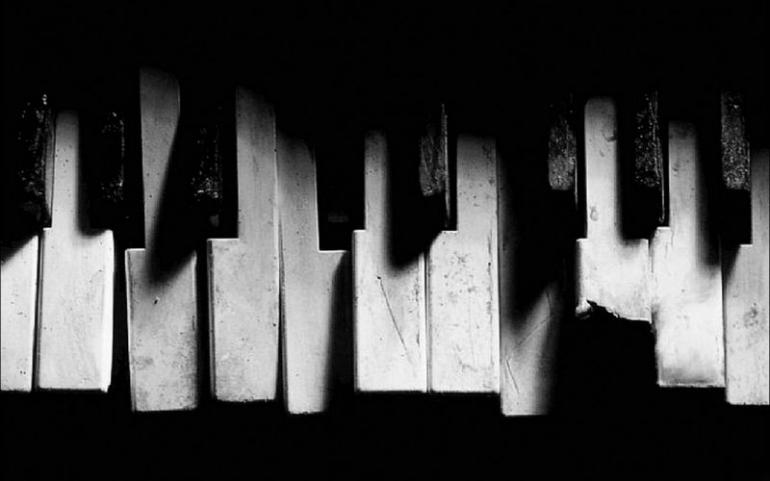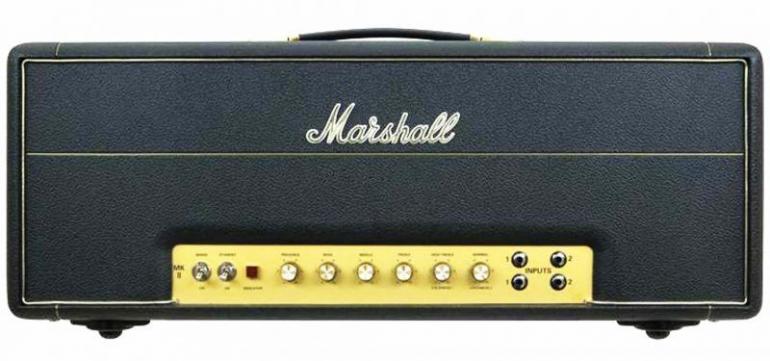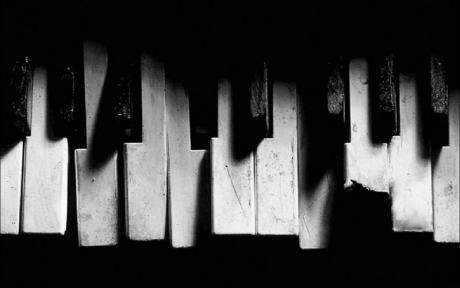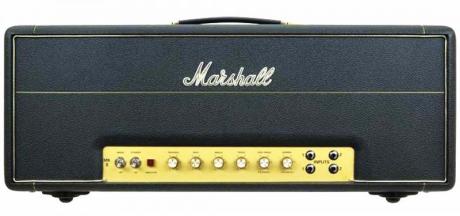Rockové klávesy - Emulace kytarového zvuku

Greetings readers, and welcome to another installment of rock keyboards! This month we will continue our discussion about emulating guitars. Last month we talked about some shreading solos. This month I want to talk about more textural applications of guitar sounds and how to emulate the sounds on keyboards.
Emulating nylon string guitars
This is a little less common emulation to hear but is an essential skill for keyboardists writing for film music. Remember that the strings of guitar can be plucked individually or played all together with a strumming motion. The intervals and spacing of the guitar are a little different also, so to play convincingly, try to spend a sometime listening to how guitarists play. Here are a few examples; for a strumming sound, roll your piano chords from the bottom up quickly and for gentle finger picking, interlocking hands can really help get the sound of open string chords. Check out our Exercise 1. I’ve come up with a simple minor melodies with bass notes that mimic how a guitarist would play in finger style. On Bar 2 beat 3+ we have a suspension which is also a very idiomatic sound in folk guitar performance. In Bar 3 we have some fifths. In Bar 4 we add a little rhythmic displacement.

Jon Lord and heavy metal organ
No discussion of guitar emulation would be complete without mention of Jon Lord. With Deep Purple, especially in the early years, Lord bypassed the conventional Leslie spinning speaker and plugged right into Marshall. His organ sound was straight with no vibrato and as he overdrove the Marshall with high gain, his tone would distort making a lead guitar tone. When played in 5ths in the low register, the organ functioned very much like a chunky power chord machine.
Most people agree that the rigs used on the Deep Purple tours were Marshall Majors and 412 cabs.
And here is a link to one of my favorite Deep Purple tunes, Highway Star:
https://www.youtube.com/watch?v=Wr9ie2J2690
I've come up with a short exercise to get the Jon Lord sound. On your organ or simulator pull the first four drawbars out (444400000) turn all the percussion, vibrato, and Leslie Speaker off. And turn the distortion UP!!
Let's look at our example and I'll explain some of the techniques. The left-hand plays all “power chords” throughout the exercise. This means the chords have no third and create a very powerful sound just like a rhythm guitarist when played with distortion. In the right hand, Bar 1 begins with a 4th shape that sounds great against all the 3rds that will follow. All the notes come from the C Dorian Scale (C, D, Eb, F, G, A, Bb, C). The right hand continues to develop as the bass moves to the relative major, Eb. In Bar 3, we add one chromatic embellishment note, B. This note and the D that follow are approach tones to the C in beat 3. In Bar 4 we combine a Fm and G triad to get a great altered dominant sound.
Shredding solos: Termín nejčastěji používaný pro okázalý styl hraní kytarových sól v metalu, hard rocku a příbuzných žánrech. Přestože pojem lze jen těžko definovat (a ještě těžší je jej přeložit), pro tento styl platí určité zákonitosti. Snad nejdůležitější je rychlost. Čím více tónů zvládnete do taktu propašovat, tím větší obdiv si získáte u příznivců shreddingu. Pozor, neplést si se Schrödingerovou kočkou, i když určité podobnosti zde nalezneme. Shredding totiž zároveň je i není hudbou (někteří jej považují za sportovní disciplínu). Čistý zvuk je zde de facto zcela zapovězen. Techniky jako tapping nebo sweep picking je záhodno používat co možná nejvíce. S vibratem také rozhodně nemusíte šetřit (vhodná je i větší amplituda), a pokud je nástroj vybaven „vibrapákou“, máte vyhráno a jednou za delší dobu si pak můžete dovolit zahrát i táhlejší tón jako kontrastní prvek, kvůli kterému zní rychlá hra ještě rychleji.
Idiomatic sound: Pojem „idiom“ pravděpodobně znáte jako termín pro ustálené slovní spojení, většinou s přeneseným významem. Podobné je to i se zvuky. Pokud nějaký označíme za „idiomatický“, znamená to, že je pro určitý styl charakteristický či často používaný. Také bych rád upozornil na pro někoho možná překvapivé užívání zdánlivě nezáludného slova „sound“. V angličtině se totiž někdy objevuje v popisech harmonických postupů. Např. „diminished sound“ neznamená ani tolik „zmenšený zvuk“, jako spíše používání zmenšených akordů pro dosažení určité nálady.
Rhythmic displacement: Jedná se o jeden z nejčastějších typů rytmické variace. Určitý motiv, který se ve skladbě již objevil jednou nebo víckrát, jednoduše začnete hrát na jinou (pozdější nebo dřívější) dobu v taktu - pokud možno záměrně. Často také dojde k přesunu přízvuků.
Lord bypassed the conventional Leslie spinning speaker: Jak Brian v tomto výroku naznačuje, dnes je poměrně těžké narazit na varhany typu Hammond bez efektu rotujícího reproduktoru Leslie. Když Jon Lord zapojí nástroj do jiného (v tomto případě kytarového) zesilovače, působí to téměř exoticky. Pro pobavení dodejme, že vynálezce těchto varhan Laurens Hammond zvuk „Leslie bedny“ vysloveně nesnášel.




